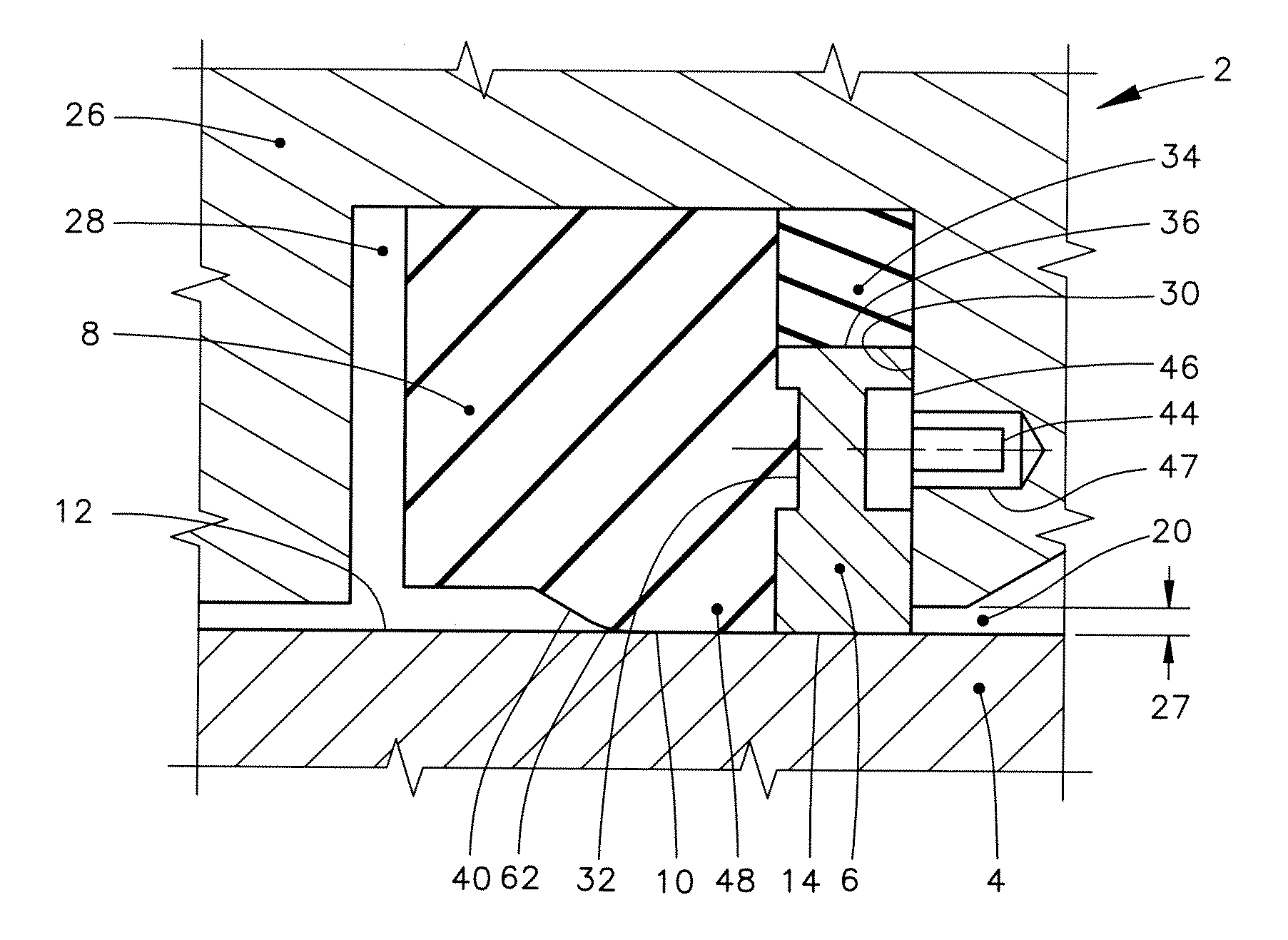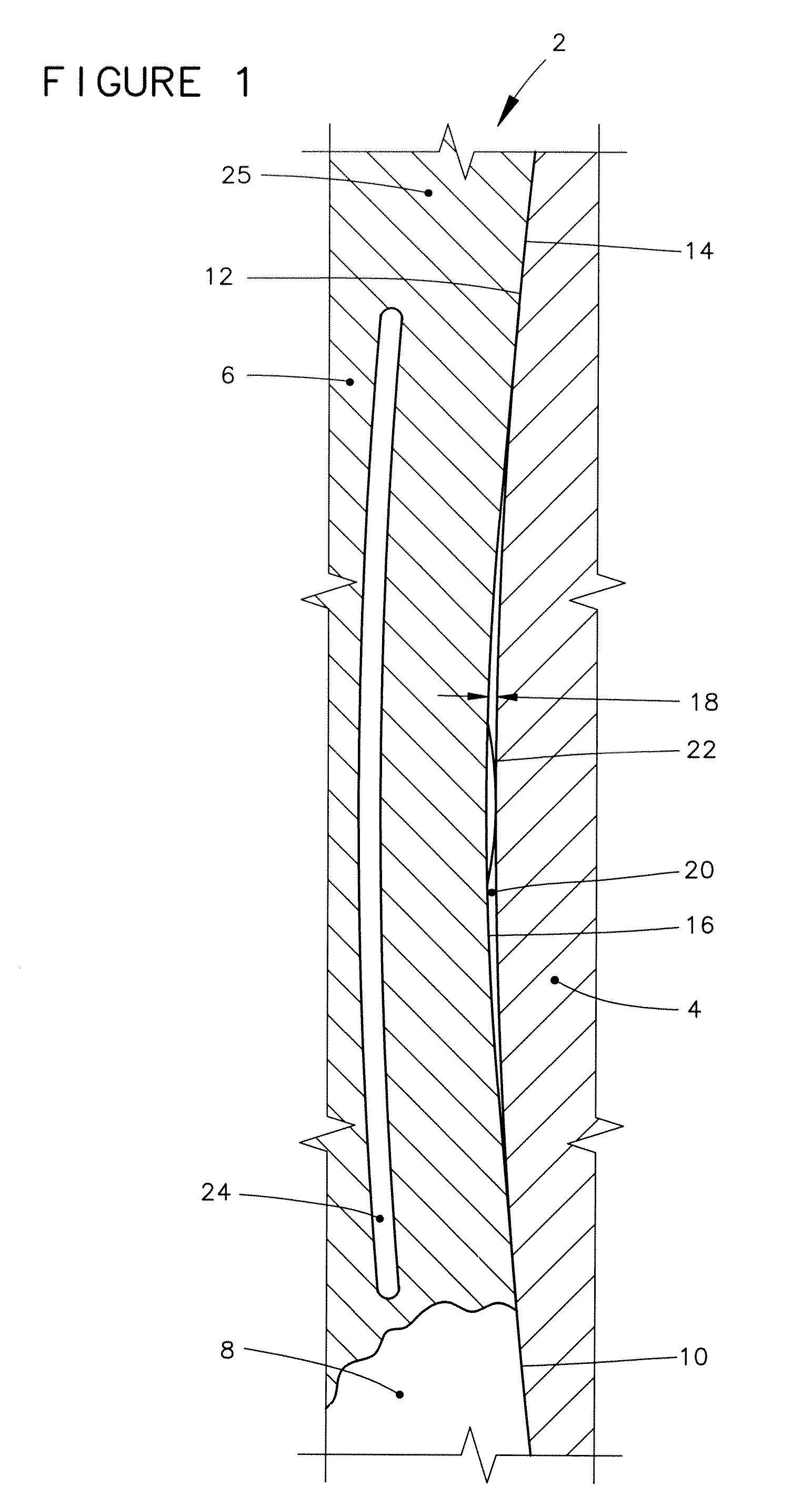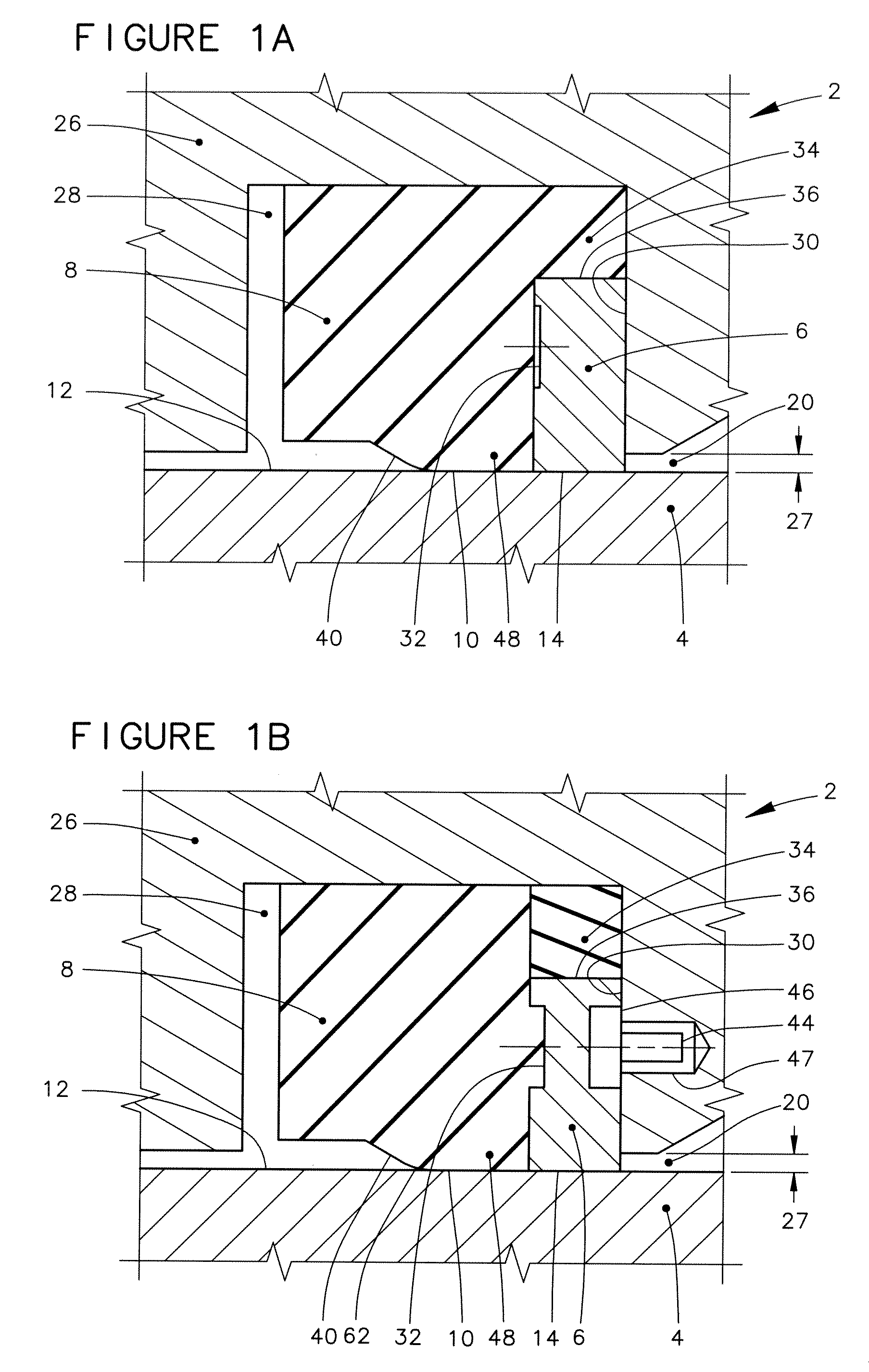Hydrodynamic backup ring
a backup ring and hydrodynamic technology, applied in the direction of engine seals, leakage prevention, machines/engines, etc., can solve the problems of static seals and reciprocating seals that are not suitable for use with rotary seals, and the differential pressure that resilient rotary seals can retain, so as to prevent the collapse of the hydrodynamic recess and the modulus of elasticity
- Summary
- Abstract
- Description
- Claims
- Application Information
AI Technical Summary
Benefits of technology
Problems solved by technology
Method used
Image
Examples
Embodiment Construction
[0061]Features throughout this specification that are represented by like numbers have the same function. Referring now to the drawings and first to FIG. 1, a fragmentary transverse cross-sectional view of a rotary assembly is shown generally at 2 at a greatly enlarged scale.
[0062]The rotary assembly 2 incorporates a relatively rotatable member 4 that is relatively rotatable with respect to a backup ring 6. The backup ring is positioned in supporting engagement with a rotary seal 8. (The cross-sectional illustration of the backup ring 6 is broken away at one location to make a portion of the rotary seal 8 visible.). A dynamic sealing surface 10 of the rotary seal 8 is held in sealing engagement with a relatively rotatable surface 12 of the relatively rotatable member 4.
[0063]By “transverse cross-sectional view,” what is meant throughout this specification is the imaginary cutting plane of the cross-sectional view is oriented at right angles to the theoretical axis of the relatively ...
PUM
 Login to View More
Login to View More Abstract
Description
Claims
Application Information
 Login to View More
Login to View More - R&D
- Intellectual Property
- Life Sciences
- Materials
- Tech Scout
- Unparalleled Data Quality
- Higher Quality Content
- 60% Fewer Hallucinations
Browse by: Latest US Patents, China's latest patents, Technical Efficacy Thesaurus, Application Domain, Technology Topic, Popular Technical Reports.
© 2025 PatSnap. All rights reserved.Legal|Privacy policy|Modern Slavery Act Transparency Statement|Sitemap|About US| Contact US: help@patsnap.com



